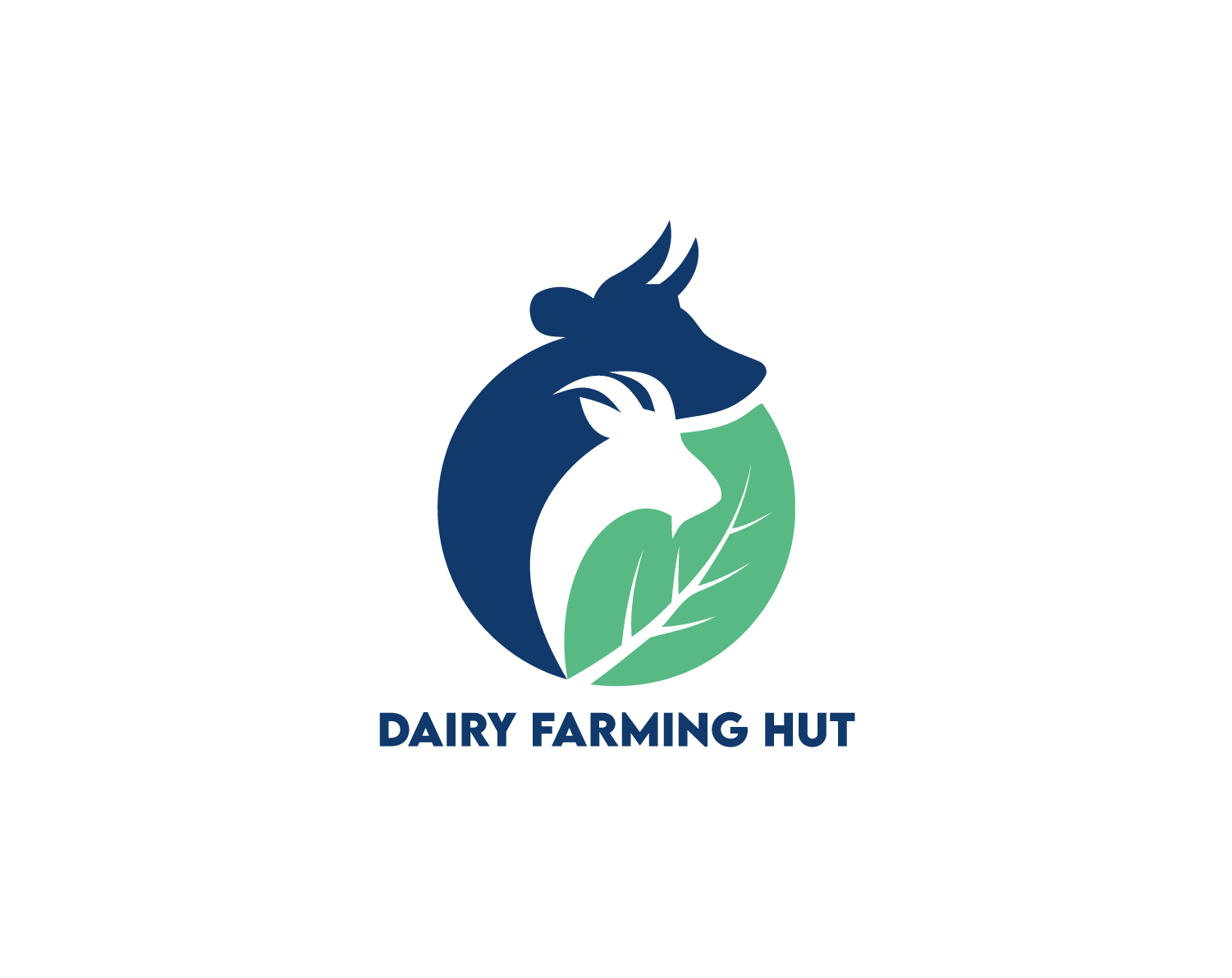We live in a world of unabashed consumerism, where the consumer is always looking for the next big thing. Alongside that, farmers are feeling the pressure to maximize profits to maintain a profit margin, particularly with family farms competing with larger corporations.
If you have landed on this page, you are likely already on the hunt for ways to maximize your farm's potential. The best way to do this is to watch societal trends and commit to following them in conjunction with a modern farm. Read on to learn about the best new trends to consider to keep your business both relevant and profitable!
1) New Technology Available for the Dairy Farm
As dairy farming continues its trek into the future, technology has been exploding onto society for the last century. Considering that it seems to be moving at breakneck speed, it can be hard to keep up with the latest and greatest, particularly financially.
Integrating new technology into your farm can be a costly endeavor, but it could very well be what saves your farm if you are facing hardship. In addition, there are many grants available for dairy farmers that provide extra funding for updating and technological advances.
Technological advancements can allow you to radically increase the size of your dairy farm, without a lot of the additional resources you would need without it. Technology allows for a much smaller workforce, which dramatically reduces overhead operation costs. This is particularly true if you integrate alternative power sources.
Mastitis Cameras for Milk Cows
Mastitis cameras are a fantastic tool for dairy farms, as they can help fix any problems before they become costly or affect production. When mastitis is caught early with thermal imaging, farmers can then treat the disease before antibiotics are needed, which reduces costs.
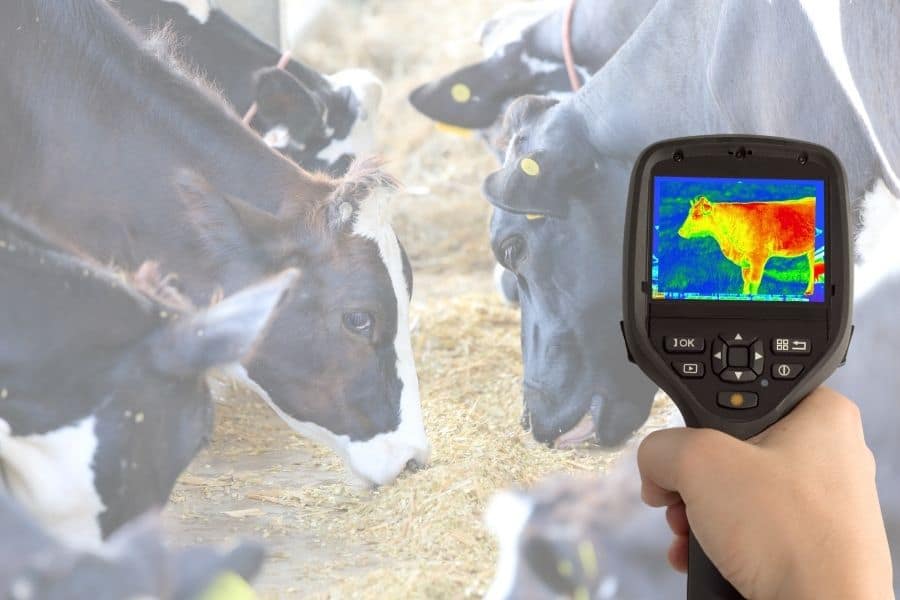
You do not need to fight to hold your cows still to get good readings, either. The camera is set up at a point where a cow can easily walk past, and the camera captures and saves thermal images for review as they pass by.
Robotic Milking Systems for Dairy Farms
Robotic milking is a revolutionary system that milks your cows on their own schedule. Cows know when it is time to be milked, as any dairy farmer can readily attest to. Robotic milking also sees consistently higher milk production per cow.
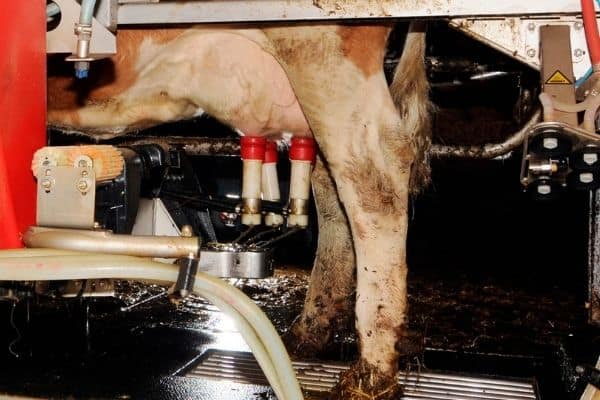
Once used to the apparatus, a cow can choose when to come in for milking. Surprisingly, it takes roughly two days to teach cows to self-milk with this system. The system handles everything from start to finish, without a person needed to stand by during the milking process. It is a very effective way to lower labor costs on the farm.
Facial Recognition Monitoring Systems for Cows
Cow monitoring systems are constantly updating and improving the revenue of your farm by identifying problems with cows early on. These systems typically use either drones or collars to monitor your cows. They can save a lot of time traditionally spent checking over your herd for any problems. Since electronic monitoring is more consistent, fewer problems go unnoticed.
The more modern systems can tell you many different things about each individual cow, including the following:
These new facial recognition systems utilize facial recognition to easily distinguish between your cows and keep their statistics separate. While this system is currently being developed for beef cattle, it is sure to carry over into the dairy industry. Each cow's history can be viewed collectively in the computer system.
Swinging Cow Brush
As every dairy farmer knows, a happy cow is a productive cow. Money spent on keeping cows happy and content pay off through higher milk production and an overall healthier animal.
A swinging cow brush is a machine that can be attached either inside a barn or in a field that allows a cow to come up and be brushed and massaged on demand. It is designed to reach all over the cow for maximum coverage.
These cow brushes have been proven to increase milk production by an average of two pounds per day per cow, while also decreasing the risk of mastitis. This is a win-win situation for both you and your cows.
As these are some of the more inexpensive technological improvements, it is an easy way to up your production and keep your livestock happy.
Drone Technology
Drones are a fantastic way to keep an eye on your farm and herd. Since they have been on the market for a while now, there are countless different types of drones available. Whether you want to use them to keep an eye on your herd or the land itself, drones provide a unique vantage point that is not available on the ground.
Using drones can help with many things around the farm:
While the facial recognition systems mentioned earlier use sophisticated drones with facial recognition and additional onboard monitoring, standard camera drones are a more cost-effective way to keep an eye on the herd. A cheaper drone does mean you sacrifice the extra metrics. However, it is still a better monitoring method than traditional means.
Solar Panels for the Farm
While not necessarily a new technology, solar panels are being used with increasing regularity on farms all over the country. Suppose your farm uses a large amount of electricity as most modern farms do. In that case, solar panels are a pure, reliable investment. You will start seeing the financial return immediately, unlike many other investments.
The up-front cost of solar power installation can look daunting, but the long-term savings are undeniable. There are also many grants and tax breaks available for farmers who go solar, decreasing the financial burden. In addition to that, adding solar panels can be claimed on taxes, reducing your liability.
If you add enough of them, solar panels can also be a source of revenue in their own right. Most power companies will buy your excess power for use in the power grid. Instead of getting an electric bill every month, you could be getting a check instead!
2) Lactose-Free Milk Products
The lactose-free dairy industry is one of the fastest-growing food markets in the United States, alongside plant-based options. According to IRI data, lactose-free milk sales are consistently growing at the double the rate of plant-based milk products.
Currently valued at a whopping $12.1 billion and projected to grow to $18.4 billion by 2025, this is one trend every dairy farmer should be eyeballing.
Those who are lactose intolerant are usually rather upset about having to give up dairy products, particularly if their intolerance presents later in life as it often does. When they have spent decades enjoying refreshing glasses of milk, they do not want to give it up.
As a result, this demographic is consistently on the hunt for the closest comparison they can find regarding both taste and texture.
Lactose intolerance is caused by the body's inability to break down lactose, the sugar found in milk. Their bodies typically do not produce enough lactase, which is the enzyme that breaks down the lactose for digestion.
By adding lactase directly to cow's milk, the consumer's body is no longer responsible for producing the lactase required to break down the milk, thus eliminating the allergy component.
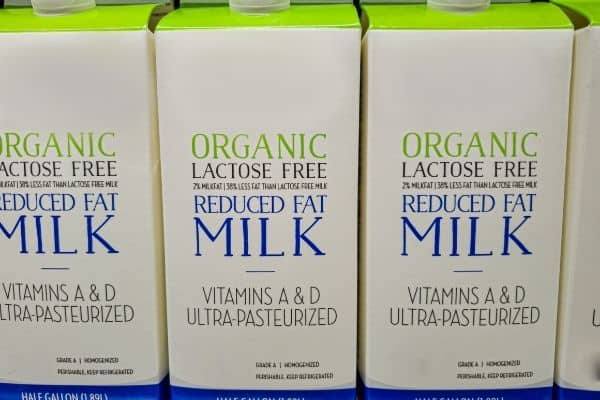
This milk is then marketed as lactose-free milk. This is rapidly becoming a preferred alternative to plant-based milk beverages and foods because it works well in recipes that require milk. The taste profile is nearly identical to regular milk.
From an economic standpoint, the profit margin of lactose-free milk is also significantly higher than that of regular milk, which can help increase overall profits for your dairy farm.
3) Plant-Based Dairy Products
No, plant-based products are not technically dairy, but they are marketed as dairy replacements.
Many companies market plant-based beverages made from soybeans, almonds, coconuts, and other plants as milk, even though they are not technically dairy.
These products are designed to imitate cow milk and are generally marketed toward people who are either lactose intolerant or vegan.
If you already have the acreage, breaking into plant-based milk products could be a boon for business whether you decide to sell the plant products wholesale or complete the process yourself and sell packaged milk products.
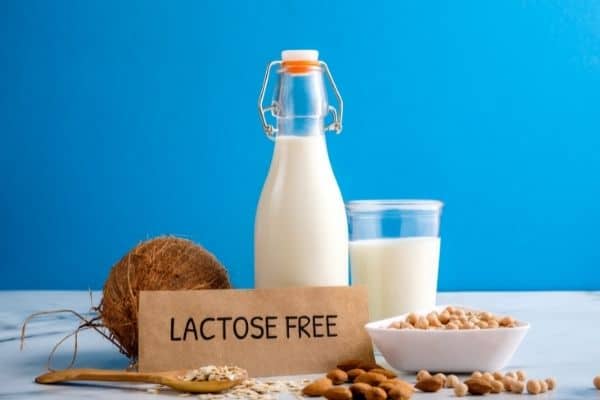
There are many plants that can be grown as part of the plant-based milk industry.
Often, these plants require less land than traditional dairy farming, as well. These types of non-dairy products do not require animals to breed or produce milk.
4) Lab-Based Dairy Products
Lab-based dairy products have taken the dairy industry by storm. This practice uses a fermentation process involving yeast and milk protein to produce milk en masse without needing to milk live cows.
There are many benefits to dairy farmers who break into this niche.
Since lab-based dairy is just getting started, now is the perfect time to break into this field. Even this early in the game, it is enjoying widespread popularity
Lab milk is an excellent alternative for many of the following different demographics.
Even if this venture seems to be out of your budget, it is worth looking into different options. Because it is so attractive to consumers and shows a lot of promise, investors are not in short supply.
5) Environmentally Friendly Business Practices
In the past, there have been many trends that consumers have flocked to. When women entered the workplace in droves, the market started hurtling toward speedy, microwaveable meals.
When vegetarianism rose in popularity, dozens of plant-based meat products flooded the market.
These days, consumers are leaning away from additives, preservatives, and practices deemed harmful to the environment or animals.
Younger generations are more conscious about leaving the environment a better place than they found it. This encompasses animals in captivity for food purposes, whether or not they are butchered.
Consumers are more aware than ever of the practices of the companies that they buy their goods from. The internet makes this information easy to get and share with others, which people are doing with gusto.
Many companies are finding themselves on the wrong end of going viral online when the public disagrees with their practices. What is essentially a hive mindset can be a death sentence for your business. It is more important than ever to listen to the consumer.
Moreover, being able to add labels such as "grass-fed" or "free-range" to your dairy product will raise its popularity with the environmentally-conscious crowd, without costing you business from people who are not in that demographic.
Whether you are already an environmentally friendly company or are heading in that direction, your business material should showcase this.
Consider including a page on your dairy farm website dedicated to this topic and what your farm does to mitigate environmental damage. Show your customers that you care about the same things they do.
Additives and Preservatives
Particularly over the last decade, a lot of focus has been on additives and preservatives in food and drinks.
Recent studies linking cancer with some preservatives have made many people in society very cautious of this practice. Most are willing to give up the longer shelf life in exchange for a healthier product.
Marketing organic milk can save on both the cost of the additives themselves, as well as give you a boost in the sticker price of your dairy products.
The shorter your ingredients list is, the happier the environmentalists will be.
The Free Range Movement
Commercial farms have received a lot of bad press regarding allegations of animal mistreatment.
Whether it is about cows kept in pens for most of their lives or chickens existing in factor rows, specific demographics of the public are not impressed.
If your animals are already free-range, you should be taking advantage of your niche by making that obvious and evident in your marketing and labeling.
Also Read: 10 Misconceptions About The Dairy Industry
Treatment of Animals
Assuming your animals are treated well, and you are not advertising that, you are missing out on some extra cash flow.
Modern consumers are willing to pay more for humane treatment of animals, as evidenced by package labeling and price differences at the grocery store.
This includes various aspects such as:
- The diet you feed them
- Roaming space
- Medical care
- Extra farm features to keep them happy
- Clean living spaces
Maximize your potential by labeling your product accordingly, as well as dedicating space on your online presence (website, Facebook page, etc.) to showcase this.
Environmentally Conscious Packaging
Various brands are starting to shy away from using too much plastic and other materials that are not considered biodegradable. This is in response to a higher public awareness of human waste.
As a matter of fact, two-thirds of Americans will choose an eco-friendly brand over a more wasteful counterpart.

With this rapidly increasing mindset, businesses that consider this and package their products accordingly are far more likely to be appreciated by the public at large, resulting in more sales and positive attention.
6) Value-Added Products Directly From the Farm
If your profit margin is suffering or you are looking to expand your farm, looking into value-added products could help.
The value-added concept means taking a product that is traditionally lower in value and finding a low-cost way to increase its value.
Dairy farms that focus solely on producing bulk milk to sell to packaging factories are missing out on hundreds of billions of dollars in national profit. There are many dairy-based products out there that can easily be made right on the farm and with minimal investment.
With automation being so much more accessible these days, this transition is not as hard as it used to be. In addition, there are many grants available to farmers who wish to integrate value-added products into their farms.
Beyond that, the popularity of products directly from the farm has always been high in rural settings, but their popularity is beginning to expand into urban areas, as well.
People these days like knowing where their food comes from and how it was sourced.
Instagrammable Products
A few years ago, "instagrammable" was not even a word, but there you are. Food and drinks that are packaged or manufactured to look unique and appealing are on the rise, particularly among food bloggers.
With social media's place in society being so firmly cemented, instagrammable food and drink could be a long-term payoff for the average dairy farmer.
Instagrammable products also have the benefit of free advertising. Any time someone with a fan base shares a photo of your product, that is an advertisement without a bill to be paid. Even more, money can be had when you factor in sponsoring internet influencers who love showcasing unique products.
Whether you already package your own product for sale or are interested in adding this step to your dairy farm, focusing on instagrammable packaging could be the way to go. Your first consideration should be that the packaging is attractive to appeal to that base.
These days, simplicity in packaging is eye-catching and appreciated when done right, which is good news for production costs. Particularly in this area, you will also have more luck with eco-friendly packaging.
Glass bottles are also currently rising in popularity. While plastic milk jugs are still the most popular, environmental concerns are leading people towards a negative view of traditional packaging.
This can also directly benefit a smaller local farm, as bottle deposits can be attached to your glass bottles to reacquire them for reuse. This practice is already popular with Amish dairy farms.
In addition to packaging, making your product unique will make it more instagrammable. Yogurt in a pretty package is great, but yogurt with a drizzle of honey on top or unique flavors give it that extra punch.
Snack Products for the Consumer on the Go
As busy as Americans are these days, snack products have enjoyed a steady rise in revenue over the years. Packaging your products for snacking on the go is sure to impress potential customers and generate more revenue.
In addition, these products can be marketed at convenience stores and gas stations, which increases their visibility to the general public.
Life is Great. Cheese is Better
Simply put, Americans love cheese. In response to this, grocery stores across America are increasing their specialty cheese sections, and consumers are loving it.
With a variety of cheeses at every conceivable price point, no budget is left behind. Anyone in cooking or dairy knows that cheese can transform almost any savory dish.
With charcuterie boards rapidly rising in popularity, this creates a special demand for different kinds of flavored cheese.
If you already produce mozzarella cheese, for example, consider adding different flavors to your rotation. Some examples include:
In addition to flavors, there are different ways to package the same kinds of cheeses to appeal to a wider base. This would include:
When considering local points of sale, it is an easy thing to add value-added products to your lineup, in addition to bulk milk sales.
Do It Yourself Food and Drink Kits
Modern generations are starting to obsess over making their own foods, which opens up dairy farms to DIY kits.
These can include:
These kits can be great for production because they take half of the process off your hands and place it instead with your customer.
All you are responsible for is portioning out the ingredients, including an instructions insert, and putting all of it into some cute packaging.
Functionally Focused Products
Functionally focused products are products that exist to improve some aspect of the consumer's health or wellness. There are many great examples of this:
By adding different vitamins or uses to your products and marketing them as such, you appeal to a base of people who care about what they ingest. With some luck, your product might even become a widely accepted brand in the health market.
7) Animal Manure as Electrical Energy
Many dairy farmers use or sell manure as fertilizer, but did you know that manure can be used as an energy source for your farm?
An anaerobic digester heats the manure to extract the methane, which makes up 65% of manure, from that manure and uses it to power your farm. Luckily, these digesters are designed so that they do not create a stench.
There are many benefits to this technology:
Anaerobic digesters are simply a great way to harness the existing and largely untapped value of your farm.
In this business, every asset that can be capitalized on should be, capitalized. That's why it's always wise to stay on top of the latest trends.
Sources:
Lactose-Free Milk: How Does It Differ From Regular Milk?
Why Factory Farming Is The Largest Cause Of Animal Abuse In History
How to benefit from the Instagrammable food trend
Dairy Products Market Share & Growth Report, 2020-2027
Dairy Robotic Milking Systems – What are the Economics? – DAIReXNET
Five Thousand Swinging Cow Brushes in North America
DSIRE: Database of State Incentives for Renewables & Efficiency®
Value Added Producer Grants | Rural Development
Drones on the farm: Putting facial recognition out to pasture
